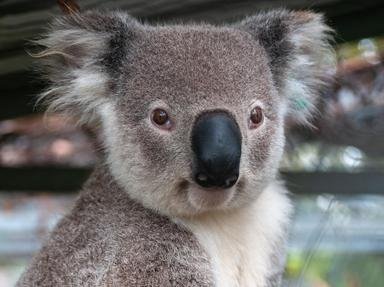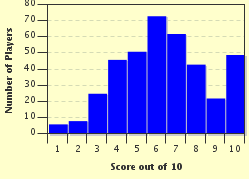Quiz Answer Key and Fun Facts
1. Procoptodon goliah is the scientific name for the largest kangaroo ever to have lived (as far as is currently known). What is the common name for this Pleistocene giant, about half again as large as the largest contemporary kangaroo, which was distinguished by its flat face and forward-pointing eyes?
2. The largest monotreme (egg-laying mammal) so far discovered was Zaglossus hacketti, a resident of Western Australia. About the size of a sheep, it has been tentatively placed in the same genus as which of the following animals with a long nose and spines?
3. Quinkana was a genus of large reptiles whose remains were found in Bluff Downs in Queensland. As a land-dwelling crocodile, it had several features that are quite distinct from its modern relatives. Which of these is NOT one of these distinguishing features?
4. Diprotodon optatum was the largest species of diprotodontid of which fossils have been found. It resembled a contemporary marsupial which is known for its burrowing capacity and stocky, strong build. What is this relative, which can be either common or hairy-nosed?
5. Sarcophilus harrisii is the only living relative of the carnivorous marsupial Sarcophilus laniarius which became extinct during the Pleistocene epoch (between 2.588 million to 12,000 years ago). Which Looney Tunes character is supposed to be a relative of S. laniarius?
6. Obduron dicksoni was a 60cm (2ft) long relative of an animal which was thought to be a hoax when the first specimens were taken to England. Which egg-laying aquatic mammal, whose males have poison spurs on their hind legs, is related to O. dicksoni?
7. Varanus priscus (also sometimes classified as Megalania prisca) is a reptilian relative of over 20 modern species after whom an Australian band, known for combining rock music with social protest, took its name. What is the more familiar name for this genus?
8. The Dromornithidae family were large flightless birds thought to have been more closely related to waterfowls than to the modern-day flightless birds such as emus and ostriches. Which of the following is the commonly-used (although distinctly unusual) nickname used by scientists when referring to Bullockornis planeii, a member of this family?
9. Phascolarctos stirtoni was about a third larger than its contemporary relative, Phascolarctos cinereus. Which cute and cuddly-looking arboreal marsupial, often incorrectly referred to as a bear, is similar to P. stirtoni?
10. Thylacoleo carnifex was a dominant Australian predator about 2 million to 46 thousand years ago. What nickname was given to these cat-like carnivores?
Source: Author
looney_tunes
This quiz was reviewed by FunTrivia editor
crisw before going online.
Any errors found in FunTrivia content are routinely corrected through our feedback system.


